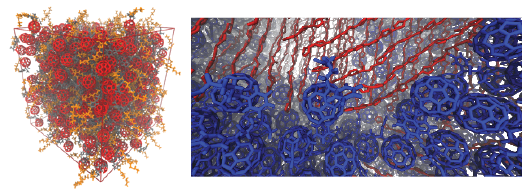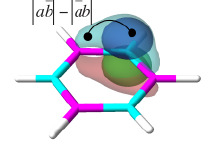Research
FOM Focus Group ‘Next Generation Organic Photovoltaics’
In the FOM Focus group, we collaborate with (experimental) chemists and physicists from the Zernike Institute, and we work on the theoretical modelling of OPV materials. We use quantum chemical methods to calculate excitation energies and other molecular properties (in particular the dielectric constant), and use molecular dynamics to study blend formation.

Non orthogonal Configuration Interaction and Singlet Fission

We develop in our group methods for performing non orthogonal configuration interaction (NOCI) calculations and valence bond (VB) calculations. NOCI/VB has the advantage that we can build wavefunctions from many-electron basis functions/structures with a chemical interpretation. We can also include orbital relaxation and (static) electron correlation in an easy way. Furthermore, the wavefunction that we build can be very compact.
Applications of these non orthogonal methods are the search for good singlet fission materials and interpretation of chemical bonding. Singlet fission is a process where one exciton is split into two triplet excitons, and can be used to enhance the performance of OPV devices. Another application of non orthogonal theories is in the description of chemical bonding, such as the π-bonding in aromatic systems.
Magnetic response theory
In our group we also study the current density induced by an external magnetic field. The induced current density is a signature of aromaticity. Methods to calculate and visualise the induced current density are developed and the methods are applied to study for example the induced current density in homoaromatic systems.

| Last modified: | 04 July 2019 4.03 p.m. |
